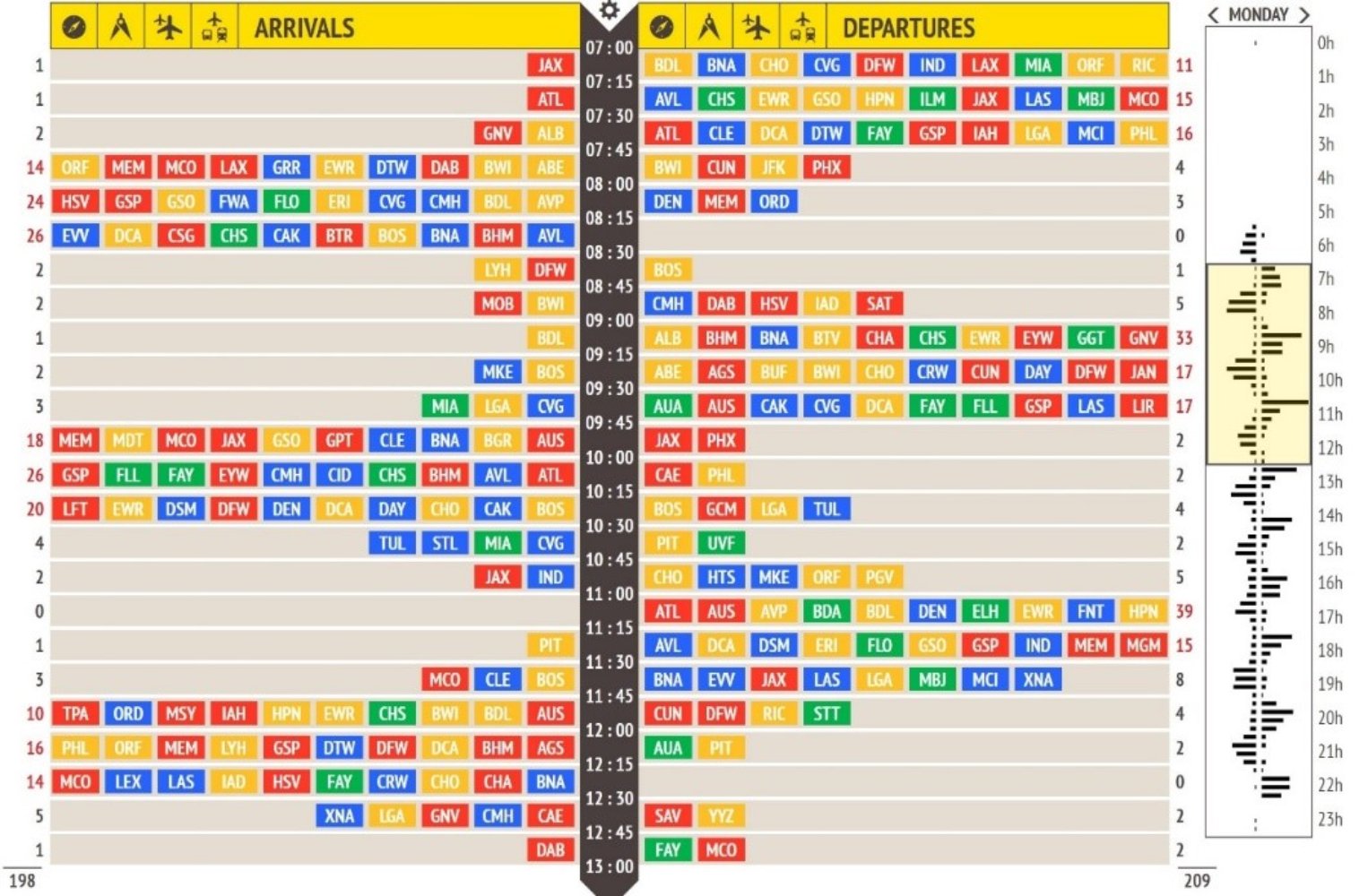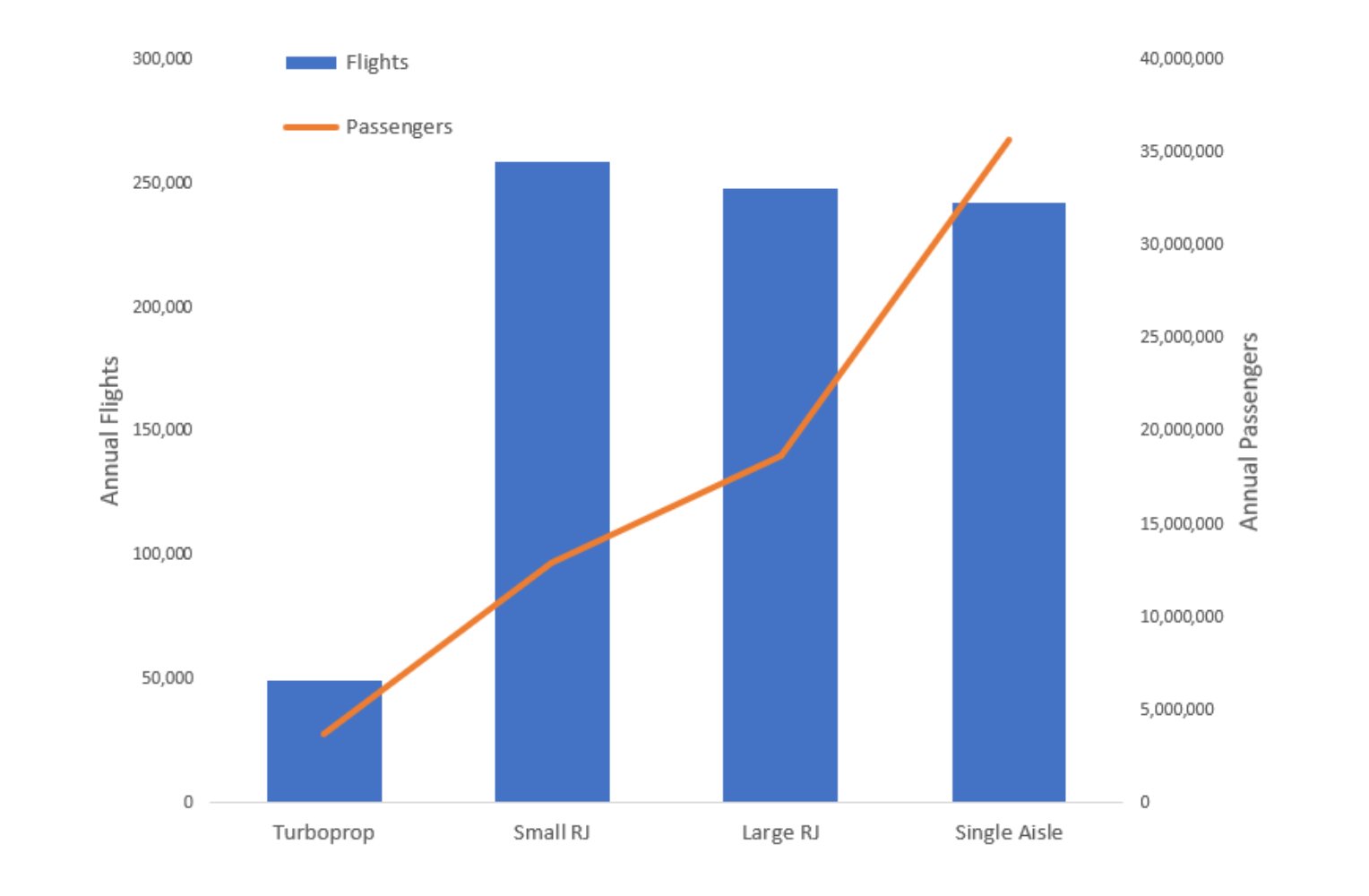There is tremendous optimism, anticipation, and excitement around the potential for advanced air mobility (AAM) vehicles to change the way we travel — both within the urban environment and regionally.

The idea of zipping quietly in a sustainable aircraft over the congested traffic below definitely has appeal to the battle-weary traveler. The AAM market is expected to grow dramatically in the coming years, introducing new mobility solutions and business models to the traveling public.
Airlines have recognized that AAM can be a natural extension of their travel offering and have made commitments for thousands of these aircraft to complement their existing fleets. They have selected a wide range of AAM configurations — from Volocopter’s two-seat VoloCity eVTOL to Heart Aerospace’s 19-seat ES-19 — with models targeting both urban air mobility and regional air mobility. What are the characteristics that make these models a good fit for commercial airlines?
| Airline | AAM aircraft | Quantity order and commitments |
| United Airlines | Archer‘s Midnight / Heart’s ES-19 | 300 / 100 |
| Mesa Airlines | Regent / Heart’s ES-19 | 200 / 100 |
| American Airlines | Vertical Aerospace’s VX4 | 350 |
| GOL Linhas Aéreas | Vertical Aerospace’s VX4 | 250 |
| Azul Airlines | Lilium Jet | 220 |
| Republic Airlines | Eve Air Mobility | 200 |
| Global Crossing Airlines | Eve Air Mobility | 200 |
| Japan Airlines | Vertical Aerospace’s VX4 / Volocopter’s VoloCity | 100 / 100 |
| Virgin Atlantic | Vertical Aerospace’s VX4 | 150 |
| SkyWest | Eve Air Mobility | 100 |
AAM business models
There are two primary business models for AAM operations: unscheduled, private operations as charter or air taxi services, and scheduled airline operations. The air taxi model has gained the most public imagination with the concept of Uber-like trips between urban locations, bypassing ground-based congestion.
Indeed, many mobility booking companies have placed orders for AAM aircraft. These mobility platforms consist of both new startups, such as Walle and Flapper, as well as existing helicopter and private jet charter companies, such as Blade and Helipass.
These companies see AAM as a growth opportunity offering lower operating costs and a more environmentally sustainable solution than helicopter charters. JetBlue recently launched a partnership with Blade to provide helicopter transfers from John F. Kennedy and Newark airports to downtown Manhattan, New York, for loyalty program members.
There are many opportunities for similar airline partnerships to expand bespoke airport shuttle services to a larger passenger-base than served by costly and exclusive helicopter services or VIP limousine services. In order to access popular urban locations, these operations will require eVTOL capability and not surprisingly, the vast majority of the AAM models ordered by mobility platform companies are either “lift-plus-cruise” or “vectored thrust” designs.
However, it is the scheduled airline operations that offer a tantalizing growth opportunity for airlines. This business model fits within their existing operating paradigm but greatly expands the potential markets beyond the current regional feeder system.
Over the last 20 years, the commuter aircraft market has been in steady decline, unable to stay cost competitive with larger aircraft. Many smaller markets are losing service because the existing fleets within the airlines are unable to support these markets efficiently.
Today, one-third of the regional feed is less than 250 miles (400 kilometers). The introduction of cost-effective, environmentally sustainable aircraft could potentially reopen many of the small routes that have been abandoned. In addition, eVTOL and eSTOL capability will allow these new AAM aircraft to use small local airports that are not accessible by commercial aircraft today.
When mapping the catchment area for a typical commercial airport, it is easy to see many communities that would benefit from the speed and convenience offered by an AAM service. Many of these locations already have most of the necessary infrastructure in place to support AAM operations.
Alternatively, in some cases, the range of AAM aircraft could allow passengers to bypass their local regional airport and connect directly to a hub airport, eliminating a connection and significantly reducing travel time.
Airline operation
Unlike an urban air taxi service, the requirements for an airport shuttle or regional air connecter are somewhat more demanding. In addition to the passengers, AAM aircraft must be able to accommodate the passenger luggage: one checked bag, a carry-on bag, and a personal item. While it is always possible to send the checked baggage in advance by surface transport, this begins to erode the convenience that the AAM service is providing in the first place, so sufficient cargo payload capacity is important.
A big advantage of connecting by AAM is the ability to bypass baggage check-in and security at the airport. This can be a significant time-savings and certainly reduces the hassles when arriving at the airport.
Of course, to be able to do this, the departure airport or vertiport must have the required security screening capability in place. Fortunately, the development of biometrics and technology is facilitating its implementation. However, passengers should not expect to hop into an AAM airport shuttle the same way they get into a ground taxi and still be able to avoid security at the airport.
Airlines typically schedule their flights in banks to provide the greatest amount of connectivity while minimizing layover time. This means that passenger demand is not consistent throughout the day. In order to satisfy demand during peak periods, there will be extra capacity during off-peak periods.
Many of the AAM business models are based on very high utilization rates allowing only the minimum amount of turnaround time required for recharging the batteries. This is a very optimistic assumption for utilization. We see ride-hailing services address a similar issue with surge pricing during periods of peak demand.

While a similar approach is certainly feasible for an AAM airport shuttle, it is somewhat counter-intuitive to expect passengers to book earlier AAM flights to balance demand when the main advantage to the AAM is reducing travel time.
Airline opportunity
By offering AAM connectivity, the airline maintains greater control over the passenger experience for the entire journey, with a more enjoyable, stress-free premium service. Today, there are intermodal services where airlines use buses or other non-aircraft vehicles as one of the flight legs, complete with a flight number.
American Airlines has branded its service between Philadelphia and nearby airports as “Landline.” Once the passenger boards the bus, they are checked in to their flight and their baggage is checked through to the destination. Passengers only need to clear security once and have no worries about missing their connecting flight. The connection is booked on the same ticket and receives AAdvantage miles. Now, imagine this same service with the speed and exclusivity of an AAM aircraft.
In addition to premium passengers, the other likely target for an AAM service is the frequent traveler, often referred to as the “road warrior.” This high-value customer will appreciate the speed and efficiency of an AAM connection that allows them to make additional customer visits during the day.
For leisure airlines, AAM provides an opportunity to transfer the passenger all the way to the final destination — whether it is a resort, cruise, conference, or other large events. This could make flying to a more distant secondary airport a viable alternative for the passenger, increasing the capture rate for the airline.
Who will operate a scheduled AAM service? Today, most airlines in the U.S. outsource their regional flying to regional operators through capacity purchase agreements (CPA). The announcement that Mesa Airlines would operate Archer Aviation’s eVTOL aircraft on behalf of United Airlines, suggests a similar business model for AAM flights.
Market opportunity
So how big is the potential AAM market for airlines? In the U.S., only 30 airports account for over 70% of the total commercial aviation traffic, however, there are over 5,000 underutilized airports which are easily accessible by eSTOL or eCTOL aircraft. That puts most of the U.S. population within a 15-minute drive of an airport, yet today, only 1.6% of all trips between 50 and 500 mi (80 to 800 km) are by air. Augment this potential with eVTOL capability at either the origin or destination, and one starts to get a glimpse of how vast this market could be.

A classic chicken and egg problem
At the macro level, there is clearly a huge opportunity for AAM, but how do we identify the markets that will deliver the greatest yield and align best with commercial airline operations? There are several variables that will impact demand for AAM versus the alternative modes of transportation. Two top considerations are the fare and the total trip time-savings. However, local market conditions, including population density and propensity to travel, will also impact overall demand.

Summary
Today, airlines represent the largest customer segment for AAM, accounting for approximately one-third of the commitments so far. AAM provides a natural extension of the airline operating model, offering a quiet, sustainable, and cost-effective means for reaching smaller communities and streamlining the travel experience.
It will be important that the AAM models currently under development or in planning meet the demanding constraints of airline operation and that design targets are carefully balanced against market requirements. Economic efficiency, reliability and capability will be among the top considerations.
About MHIRJ Aero Advisory Services
A team of industry experts with aircraft manufacturing, airline and lessor experience, MHIRJ Aero Advisory Services delivers independent analysis for strategic decision-making using a unique market forecast methodology that identifies and quantifies opportunities. Structured insights are used to map the regional air mobility (RAM) and original equipment manufacturer (OEM) landscape.









Thanks for your insights, Stephen. Could you specifically address two concerns which will have a direct impact on scalability of eVTOL aircraft in airline ops.
1. What ticket prices can we expect? With CASM expected to be between $3 and $6/seat-mile (Eve/MIT and
investor decks) and a 60 NM trip costing ~$400, it will be difficult to attract large numbers of passengers, especially if they cannot take their checked-in bags with them.
2. VFR/VMC only limitations will directly impact dispatch reliability for airlines. If eVTOL flights end up having to be canceled or delayed frequently, it will be seen as an unreliable service, or be restricted to regions with good weather only.
Thanks
Saleem,
Thank you for your questions,
1. For airline operations it is important to look at the yield for the entire trip. The cost of the AAM connection is included in the ticket price, which may now be slightly higher, but is for a much more convenient departure/arrival location. The actual price that a passenger is willing to pay is determined at the individual market level where we can model the value of the AAM benefits versus travel by car, train, bus or other conventional means. For each market we look at several characteristics such as population density, propensity to travel, total trip time saving, etc. The elasticity of this demand is what we quantify in our regional air mobility model. Please reach out and I will be happy to provide examples and greater details.
2. We feel that regional air mobility can be implemented most easily from under-utilized regional airports that will allow passengers to fly from a location that is much closer to their origin or destination. Once the passenger is checked in to the AAM flight as part of an airline ticket, the airline is responsible for making alternate arrangements in the event of a weather delay, which provides additional peace of mind. Weather delays are always an inconvenience during travel, however AAM travel from regional airports should deliver similar reliability as that for mainline fleets.